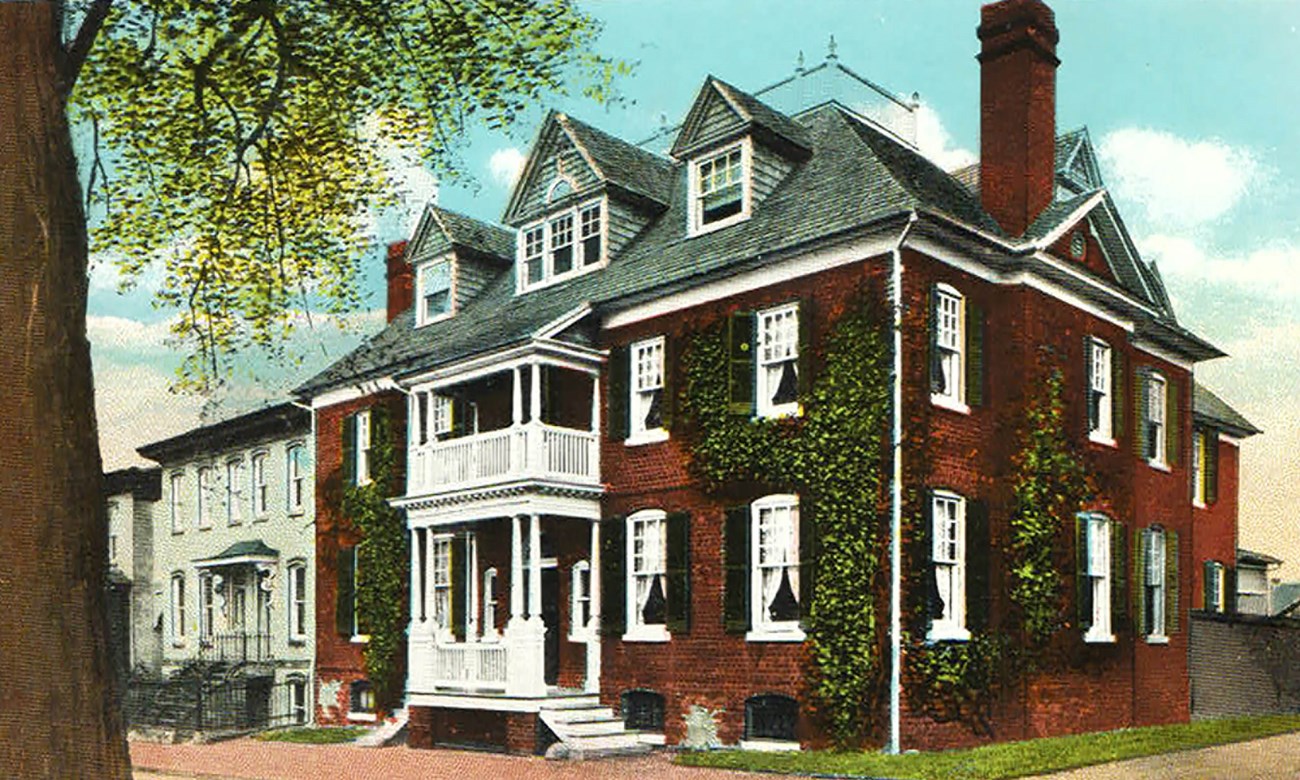Last updated: March 13, 2025
Article
The Peggy Stewart House

Thomas Stone National Historic Site
In January 1772, Thomas Stone’s uncle, Daniel of St. Thomas Jenifer, purchased the house. Within a year of purchasing the mansion, Jenifer had consolidated the lots around the Peggy Stewart House and sold the enlarged property to Anthony Stewart, a Loyalist merchant. (Stewart not only named the house for his young daughter Peggy, but also a cargo ship named the Peggy Stewart.)
Stewart is mostly known for his attempt in 1774 to unload and sell a shipment of tea aboard his ship. In response to Parliament’s Tea Act of 1773, many colonial communities, including Annapolis, passed non-importation resolutions to prevent tea from being sold. After an angry mob threated to tar and feather or hang Stewart in front of his home, Stewart agreed to burn the Peggy Stewart and its load of tea.
Stewart left Annapolis soon afterwards for London and then Nova Scotia. His wife and daughter, Peggy, remained behind. In 1779, Mrs. Stewart defaulted on the mortgage of the Peggy Stewart House and the property reverted to Daniel of St. Thomas Jenifer. Despite owning the Peggy Stewart House on two separate occasions, there is no evidence that Jenifer ever lived in the mansion.
By the early 1780s, Thomas Stone began looking for a residence in Annpolis. Stone’s wife, Margaret, was an invalid at their plantation of Haberdeventure and as he served as a state senator in Annapolis, 50 miles away from his home he felt it wise to move the family to Maryland's capital. Stone purchased the Peggy Stewart House from his uncle in 1783. Over the next few years, Stone downsized his farming activities in Charles County and moved much of the family’s personal effects to their new home.
In early 1787, Stone was selected to represent Maryland at the Constitutional Convention in Philadelphia, but he declined to go. His reasoning was simple; Margaret was dying. Daniel of St. Thomas Jenifer went to Philadelphia in Stone’s place. Margaret died on June 3, 1787, at the Peggy Stewart House after suffering for more than a decade. Grief-stricken, Thomas Stone's health quickly declined. On the advice of his physicians, Stone agreed to leave the area and head for the West Indies to restore his health. However, just before his ship was to depart from Alexandria, Virginia, Thomas Stone died on October 5, 1787. Both Thomas and Margaret were buried at the family’s mansion at Haberdeventure.
The title of the Peggy Stewart House passed on to Thomas Stone’s children. In January 1788, the family listed the property for sale in the Maryland Gazette, but no offers were accepted. Over the next decade, further attempts to sell the mansion failed and instead it was rented out.
The most significant renter was Thomas Stone’s brother, John Hoskins Stone. Between 1794 and 1797, John Hoskins Stone served as Maryland’s governor and lived in the Jennings House, the official residence of the state’s governors. When his terms as governor ended, John Hoskins Stone stayed in Annapolis, most likely to handle his mercantile affairs. During this time, John Hoskins Stone paid $1,000 in taxes on the Peggy Stewart House property, which included the mansion, a stable, a coach house, a brick smokehouse, and one acre of land.
In 1801, former U.S. Congressman Michael Jenifer Stone, another of Thomas Stone’s brothers and the executor of Thomas Stone’s estate, was finally able to sell the Peggy Stewart House. It was purchased by Thomas Harwood, who had been an officer in the famed First Maryland Regiment during the Revolutionary War. Despite some unwise investments, Harwood somehow found the money to obtain the Peggy Stewart House, which stayed in the Harwood family through the Civil War.
Over the following century and a half, the Peggy Stewart House has had numerous owners. On October 7, 1973, the property was listed by the National Park Service as a National Historic Landmark.
Note: The Peggy Stewart House is currently a private residence. It is located at 207 Hanover Street in Annapolis, Maryland, near the entrance of the United States Naval Academy.
